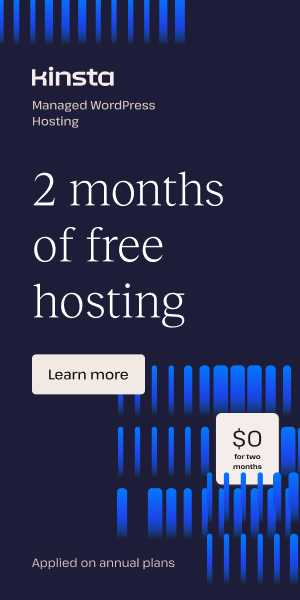Performance Tips for WordPress Sites from Figma
Essential Foundations for Website Speed Improvement
When it comes to WordPress performance optimization, the foundation starts with smart design and technical setup. Leveraging Figma as your design tool can significantly impact your site’s loading speed if you implement efficient practices from design to development. A well-structured design workflow minimizes unnecessary assets and complexities, ultimately helping your WordPress site load faster and perform smoothly.
Start by choosing a high-quality, lightweight WordPress theme optimized for speed. Themes bloated with excessive scripts and styles hinder performance dramatically. Opt for themes focused on minimalism and clean code such as Astra, GeneratePress, or Neve. These form a solid basis before even adding plugins or custom code.
Why Figma Design Speed Matters
Figma enables designers to craft precise UI/UX frameworks, but design choices directly influence the final website’s weight. Excessive layers, uncompressed images, and complex vector shapes increase asset size.
- Optimize image assets in Figma: Export images in formats like optimized PNG or, preferably, WebP to reduce file size without losing quality.
- Limit decorative elements: Use CSS effects instead of image overlays wherever possible to lower HTTP requests.
- Use reusable components and styles within Figma to keep the design consistent and avoid redundant elements in HTML and CSS output.
Preparing your design carefully in Figma sets the stage for smoother development and faster websites.
Advanced WordPress Performance Optimization Strategies
Translating Figma designs into WordPress sites is the specialty of Figma2WP Service, which emphasizes speed and efficiency. To enhance performance, consider these advanced strategies from the development side:
- Defer and delay JavaScript loading: Many WordPress sites suffer delays because scripts block rendering. Load non-critical JS files asynchronously or defer them. Plugins like WP Rocket simplify this by letting you control JS loading order, significantly boosting speed metrics.
- Optimize CSS delivery: Inline critical CSS for above-the-fold content and defer non-critical stylesheet loading. Removing unused CSS reduces render-blocking CSS, a major factor in performance.
- Minimize plugin use and external requests: Excess plugins and external HTTP calls slow servers and increase load time. Audit plugins regularly and deactivate those not essential. Reduce dependencies on external scripts, merging files where feasible.
- Use a Content Delivery Network (CDN): Services like Cloudflare or KeyCDN distribute content globally closer to visitors, speeding asset delivery.
- Implement caching: Cache static assets and generated HTML pages. Popular plugins like WP Rocket or W3 Total Cache handle advanced caching with minimal setup.
Image Optimization Best Practices
Images are often the largest files on your WordPress site, requiring specific attention:
- Choose the right formats: WebP offers superior compression and quality compared to JPEG/PNG and is supported by most modern browsers.
- Utilize lazy loading: Delay loading images until they appear in the viewport. Native lazy loading is now widely supported in browsers.
- Compress images: Use tools like TinyPNG or Squoosh before uploading, or automated plugins such as ShortPixel.
Practical Workflow: From Figma to WordPress with Speed in Mind
The pathway from Figma design to a performant WordPress site involves several export and development best practices:
- Design with performance constraints: Work with designers to limit complex layers and heavy effects. Keep UI components modular and lightweight.
- Export assets thoughtfully: From Figma, export only necessary icon SVGs or optimized images. Avoid bulk PNG exports for items that can be recreated in CSS or SVG.
- Streamline HTML/CSS: When developers convert designs, focus on semantic HTML and minimal CSS to replicate visuals without redundancy.
- Integrate performance plugins early: Enable caching, defer JS, inline critical CSS plugins as part of the build process.
- Test and refine: Regularly audit performance with tools like Google PageSpeed Insights, GTmetrix, and Web.dev’s Lighthouse.
Case Study: A US Marketing Agency’s Speed Boost
A leading marketing agency serving USA clients used Figma2WP Service to convert their custom designs into a WordPress platform. Initially, their site load times ranged over 5 seconds, affecting bounce rates.
- By optimizing their Figma assets with WebP exports and minimizing unnecessary vector complexities, the asset size decreased by 40%.
- During WordPress implementation, the team deferred non-critical JavaScript and used critical CSS inlining.
- Enabling caching and deploying a Cloudflare CDN further accelerated delivery globally.
The result was a site loading under 2 seconds across major US cities, demonstrating the power of Figma2WP Service integrated with performance best practices.
Regular Maintenance Practices to Sustain Speed
Performance optimization is ongoing. To keep your WordPress site efficient over time, observe these routines:
- Update themes, plugins, and WordPress core: Updates often include performance enhancements and security fixes.
- Remove unused plugins and themes: These add overhead and security risks.
- Continuously monitor site speed: Use tools such as Pingdom and Google Lighthouse regularly.
- Optimize database: Plugins like WP-Optimize help clean database overhead which can slow queries.
Exploring Additional Resources
Enhance your knowledge and toolbox with some well-regarded resources:
- WP Rocket’s comprehensive speed guide offers advanced technical tips for WordPress
- WPBeginner’s practical WordPress speed tips include plugin recommendations and best practices
- WordPress.org’s official performance optimization guidelines
Transform Your WordPress Site for Peak Performance
Combining deliberate design decisions in Figma with smart WordPress development strategies leads to outstanding site speed and user experience. By minimizing asset sizes, deferring non-critical resources, and employing robust caching and CDN solutions, your site can engage visitors fast and rank higher in search engines.
If you’re ready to seamlessly convert your Figma prototypes into blazing-fast WordPress websites, explore services like Figma2WP Service that specialize in this transformation. For any specific project inquiries or personalized advice, don’t hesitate to Contact Us today and discover how to achieve optimal website loading speed tailored to your needs.
More From Our Blog
Maximizing Classified Ads Impact Through Modern Conversion Strategies In today’s digital marketplace, turning casual visitors into active users or buyers on classified ads sites requires more than just posting listings. Effective conversion rate optimization (CRO) is the secret weapon that many marketplace sites leverage to boost engagement and sales. Whether you are running a job Read more…
Leveraging WordPress Plugins to Build Powerful Online Directories Creating comprehensive and user-friendly online directories using WordPress has become an essential strategy for business, local communities, and niche markets worldwide. Whether you’re aiming to develop a business directories platform, a local listing, or a multi-category directory, WordPress offers a wealth of plugins to help you achieve Read more…


